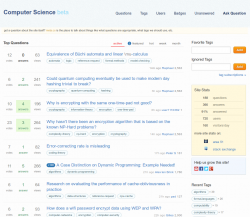How do you create high-quality technical images for documents, your website or posts on Stack Exchange? I have used tools in an ad-hoc manner for a while and have become frustrated lately. Once you have used TikZ1 with \(\LaTeX\) most other tools feel inferior. The only problem is: TikZ is a \(\LaTeX\) package and can not be used on its own. So how to convert TikZ to say PNG comfortably?
\(\TeX\)-guru Martin Scharrer comes to the rescue: he wrote the package standalone for exactly this use case. Based on his explanation on tex.SE I built a small bash script that does all the repetitive work for you. With one simple command, this
%p% \usetikzlibrary{arrows,automata,positioning}
\begin{tikzpicture}[shorten >=1pt,node distance=2cm,auto]
\node[state,initial] (q_0) {$q_0$};
\node[state,accepting] (q_1) [right of=q_0] {$q_1$};
\path[->] (q_0) edge [bend left] node {$a$} (q_1)
(q_1) edge [bend left] node {$b$} (q_0);
\end{tikzpicture}
becomes this in a matter of seconds:
![]()
Get tikz2png on GitHub and enjoy!
- Check out the awesome gallery of examples and the comprehensive manual. ↩









